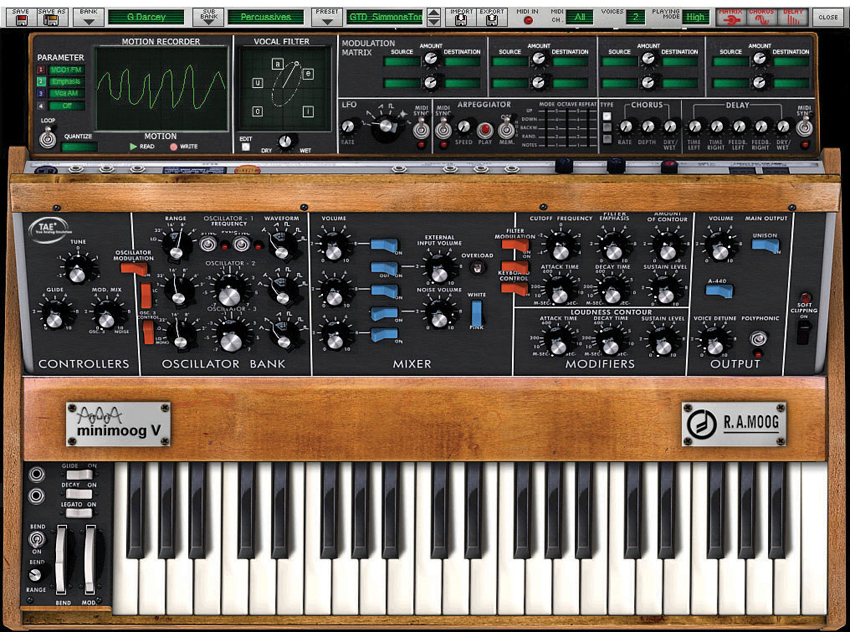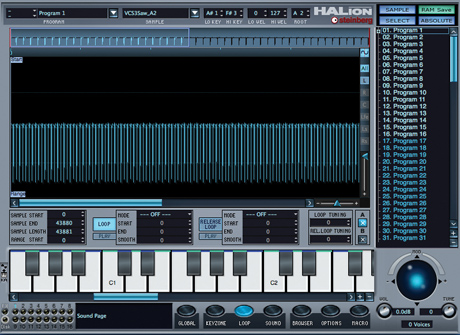8 seriously useful synth tips
Sound design ideas you might not have considered

Synths are now such an integral part of the DAW experience that it's easy to forget that they exist as individual tools with their own distinct feature sets.
This being the case, there's a good chance that you're currently blissfully unaware of some of the clever things that your synths can do, and of what you can do with your synths.
What's more, it's worth remembering that there are times when it's best not to use a synth at all.
Read on to find out more...
1. Find the metal
Your sampler might be an obvious source of metallic sounds, such as cymbals and gongs, but don't overlook that trusty analogue synth. Many subtractive instruments offer frequency, amplitude and ring modulation. These can provide a wealth of twisted metal textures that can be used for everything from tinny hi-hats to clangorous bells.
2. Synth as effect
Like many soft synths, some virtual Minimoogs can act as effects plug-ins, too, so you can route any signal through your favourite filters for some sweetening. Consider plumbing your sampler or other synth patches through it.
3. Build your own…
So, what if you've searched through vast numbers of instruments and still haven't found the sound you've got in your head? Maybe it's time to create your own dream synth using one of the many modular environments, such as Reaktor, SynthEdit or SynthMaker. These programs enable you to string together various components. Some of them will even export the result as a plug-in to be used in your DAW.
Get the MusicRadar Newsletter
Want all the hottest music and gear news, reviews, deals, features and more, direct to your inbox? Sign up here.
4. … Then keep building
Sample-based synthesizers can be powerful allies in the search for the perfect sound, but many of them are hobbled by being tied to a collection of waveforms over which you have no control. Free yourself from the factory by creating your own synth, using a sampler like Kontakt or HALion, and loading it with your own selection of waveforms. We're not just talking about real instruments (though those are good, too), but sampled and looped waveforms of any description. Use a signal generator like the ones built into Audacity and Sound Forge to create waveforms, or whip some up with an additive instrument and then record them without any filtering or modulation. These can provide fantastic fodder for you soft samplers.
5. Pilfer the frequencies
You can also use the above technique to 'steal' the harmonic content of an acoustic or electric instrument and then reshape it into something that has the character of the original, but that's entirely your own. Record only the sustained, steady-state portion of each note and create short, looped waveforms from them. You can then apply envelopes and modulation as you see fit in the software of your choice.

6. Use samples when you have to
While creating sounds entirely within your synthesizer might be rewarding and challenging, it can be easy to forget that it's the music that counts. When you're on a roll and you need a great acoustic snare sound, it'd be foolish to interrupt the flow of creativity by digging through synthesis parameters when you have a perfectly good sample lying around. Just use it!
7. Know your gear
There's no substitute for knowledge and skill. The shortest possible path between your brain and your ears is achievable only by gaining an intimate knowledge of your gear. The fact is that a deft programmer can design exactly the right sound in far less time than it takes to search through a collection of presets for something 'close enough', so keep practising.
8. Use fewer synths
How about a shocking suggestion? Trim the fat! If you want to learn how to wring the best patches out of your synths, you might be better off shedding some of the soundalikes. Grab one instrument that exemplifies each synthesis technique and focus on these few until you know them inside and out. There's no need to have, say, three FM synthesisers and ten ROMplers if you can wring nearly every possible timbre from each one.
Now read 23 old-school synth tips
Sign up for the free weekly MusicRadar newsletter
Get MusicRadar news delivered straight to your inbox. The free MusicRadar newsletter serves up the week's biggest artist and product news stories alongside exclusive tuition and gear reviews. Sign up at http://www.musicradar.com/register
Computer Music magazine is the world’s best selling publication dedicated solely to making great music with your Mac or PC computer. Each issue it brings its lucky readers the best in cutting-edge tutorials, need-to-know, expert software reviews and even all the tools you actually need to make great music today, courtesy of our legendary CM Plugin Suite.
“Excels at unique modulated timbres, atonal drones and microtonal sequences that reinvent themselves each time you dare to touch the synth”: Soma Laboratories Lyra-4 review
“A superb-sounding and well thought-out pro-end keyboard”: Roland V-Stage 88 & 76-note keyboards review










